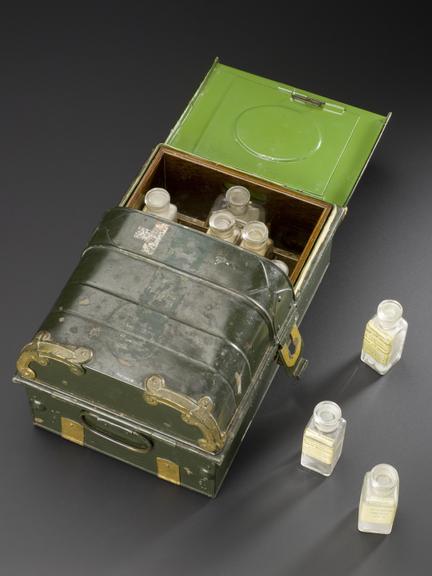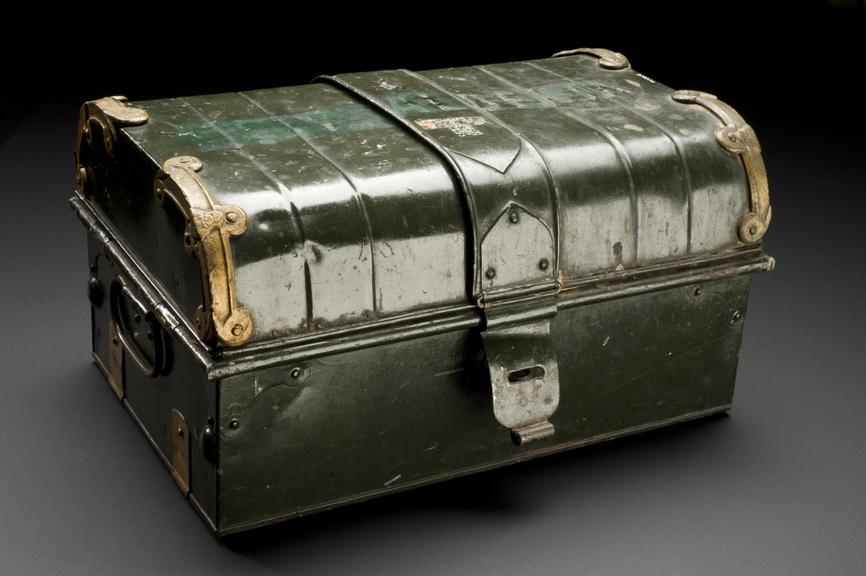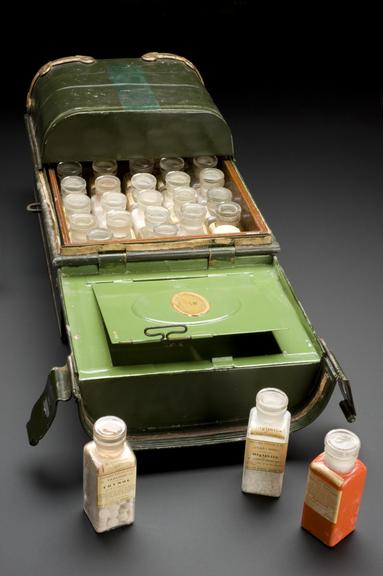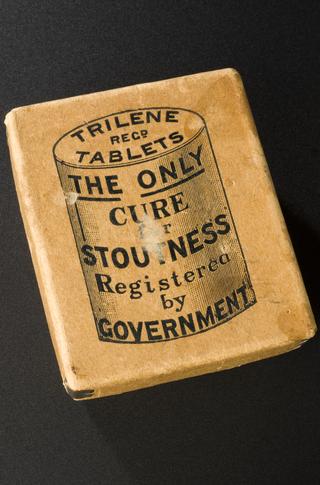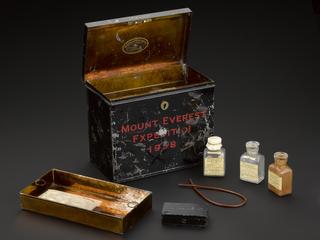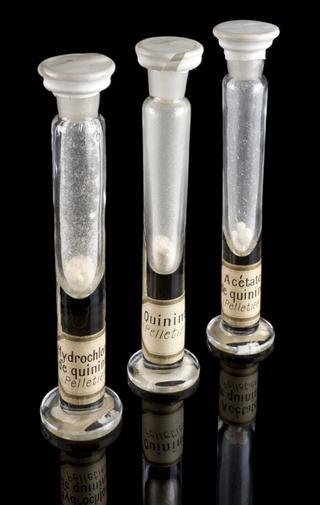`Tabloid' medicine chest in metal case used by Teddy Roosevelt on African Expedition, 1909 (originally catalogued as 1911), made by Burroughs Wellcome and Co., 1900-1909
What is more dangerous, a lion or a mosquito? If you went big game hunting in Africa a hundred years ago you took plenty of guns and ammunition, but also a good supply of quinine. The drug had long been essential for travellers braving malaria-infested parts of the world and this medicine chest was particularly well stocked.
It was taken to Africa by former US President Theodore ‘Teddy’ Roosevelt and his expedition in 1909. How do we know they encountered malaria? The chest originally contained six bottles of plain and ‘sugar coated’ quinine tablets, an anti-malarial drug used to treat established infections. Four bottles remain but only two have any contents left, suggesting the expedition got through the rest.
Another bottle of pills bears the curious name ‘Livingstone Rouser’, based on an original recipe developed by the missionary and explorer David Livingstone sixty years earlier. By combining quinine with laxatives such as rhubarb, Livingstone found that the drug helped to ‘rouse’ his body against the fever. It probably just relieved the main side effect of quinine – constipation.
With malarial mosquitoes tackled, how did the lions fare? Roosevelt and his companions were meant to be on a scientific collecting expedition for the Smithsonian Institute, but they hunted on a grand scale. He’d spared the life of a bear during a trip in 1902, sparking the soft toy trend we know as the teddy bear. But among the thousands of animals killed on this trip were several white rhinos – rare even then – one of which Roosevelt shot as it slept.














